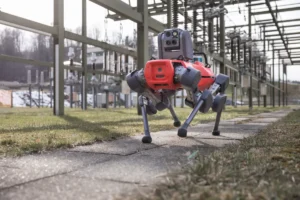Ports are important links in the global supply chain, a container terminal plays a critical role in international shipping, the container trade worldwide is expected to grow.
The productivity of the containers terminal can increase considerably with the introduction of Automated Robot Cranes (ARC). The ARC can perform tasks autonomously or be controlled remotely by humans. Container handling can be performed with several lifting equipment including Reach Stacker, (STS) or (STS-AD) Ship-To-Shore – Automated Driving container crane, (RTG) or (ARTG) Automated – Rubber Tyred Gantry and (RMG) or (ARMG) Automated – Rail Mounted Gantry cranes, etc.
Container handling can be managed in a completely autonomous and computer-controlled mode, but in some cases it is necessary to combine this mode with the remotely operated system.
In several situations such as when the container is close to truck or manned vehicle a human operator is required to manage or supervise the tasks from a remote control room. To conduct or to support effective remote operations, the Automated Cranes are equipped with cameras and tools, automatic steering, micro-speed device, laser and/or Infrared (IR), collision avoidance, navigation sensors, truck positioning, automatic gantry and trolley positioning, controllers, Position Detection Systems (PDS)/position detection of containers, etc.
This work environment requires operators to be skilled in performing complex tasks in an efficient and safe manner, so it is important that the workers and operators reach an adequate level of the learning through a professional training that also improves working safety and the health.
Crane Operator training is carried out through virtual crane simulators. It can reduce the costs, give participants the fundamentals to work remotely and inside cabin and it allows to assess the competence of crane operators in a safe and efficient way.
Jessica Moro
DSO
Image
Cover: LBTC Port of Long Beach by DENNIS SCHROEDER / NREL, National Renewable Energy Lab

